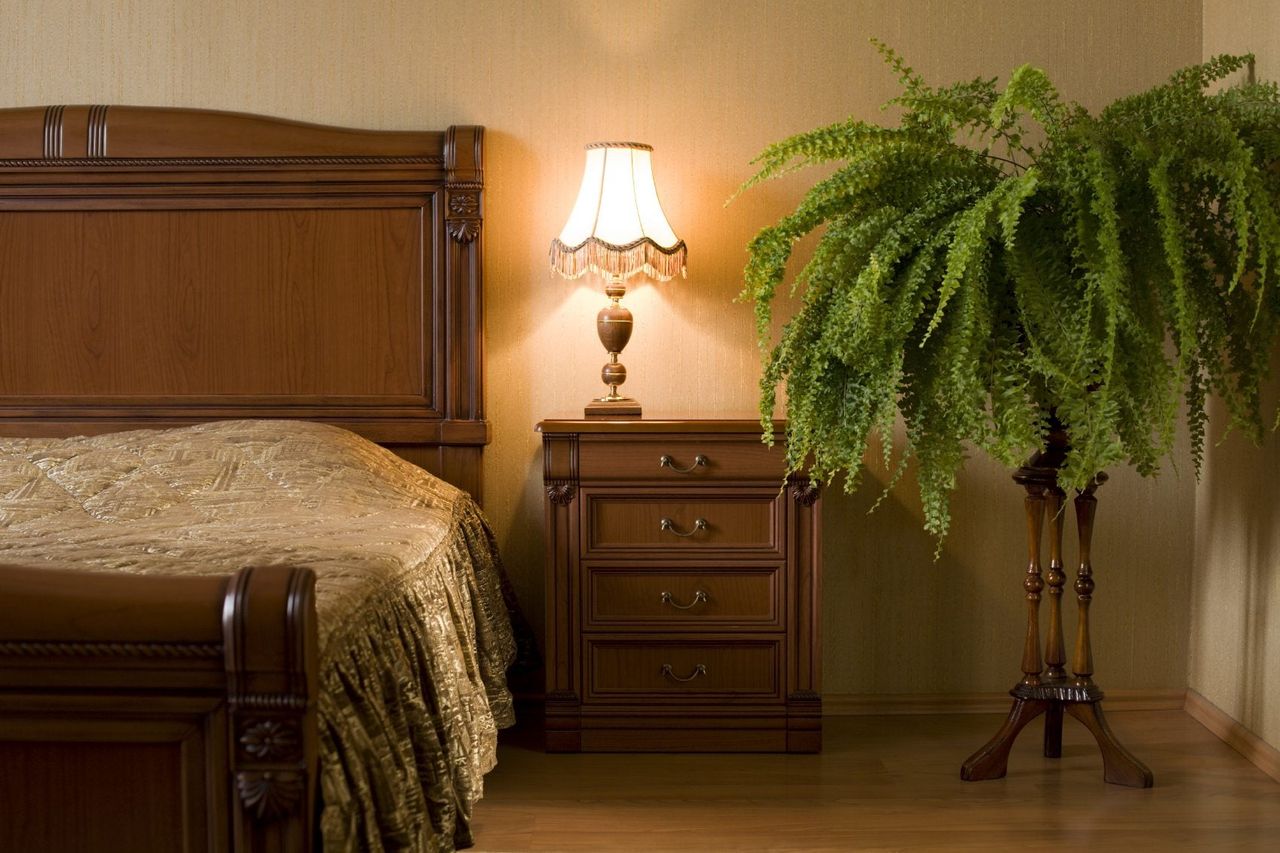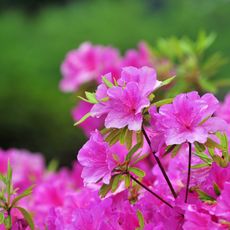Interior Decorating With Houseplants


Plants bring movement and life to every room in your home. However, you will be pleased by the whole picture only if there is harmony in the arrangement and color of the plants you have chosen. Once you have learned how to take these things into account when choosing your indoor plants, you can let your taste and imagination plan the plant décor you have living in your home.
How to Decorate with Plants Indoors
The larger the room you are working with, the bigger and more numerous the plants can be. Let's face it, a single small green plant looks lost in a large empty space. Several flowering plants in a basket or arranged in small pots on the same table can serve as a beautifully colorful accent to a room. Tree-like plants have great importance in the sense of decorating. Large-leafed species like dracaena, philodendron, or the banyan tree (Ficus benghalensis) can really fill up a sparsely furnished room or entrance hall and leave their mark. In a small room, large plants are oppressive and take up way too much space. To get the best effect, choose mid-size or small plants with large delicate leaves. Put the plants where they are going to be visible, but don't put too many plants in a small space or it will get too crowded and your individual plants won't make their full impact on the room. Plants always look best against simple backgrounds. If they have large foliage, they should be placed in front of wallpaper with a small pattern. Large patterned wallpaper calls out for filigreed leaves or ferns. Even the umbrella sedge (Cyperus) would work for that. Wood-paneled walls like climbing plants arranged on a wood or bamboo support. These also look great by brightly painted walls. Make sure your decorative scheme takes into account the way light enters your room. If you put the plants in front of a bright, sunny wall, their shadows can create interesting and unusual patterns on the wall, ceiling, or even plain carpeting. Make sure the colors of leaves and flowers you choose don't clash with your décor. You don't want to take expensive furnishings and wall coverings and reduce them by the wrong colored flowers in your pots. Place your plants by each other where they can compliment one another. Put larger plants in the background of smaller plant groupings. A little bit of ivy (Hedera helix) growing over the edge of a pretty bowl looks nicely casual.
Indoor Plants for the Home
Not only do plants affect your decorating sense and help you pretty up your home, they all have some sort of way of improving your room climate. The following plants will increase the humidity in your home:
- Flowering maple (Abutilon hybrids)
- Zebra plants (Aphelandra squarrosa)
- Bird's nest fern (Asplenium nidus)
- Grape ivy (Cissus rhombifolia)
- Papyrus plant (Cyperus papyrus)
- Japanese aralia (Fatsia japonica)
- Hibiscus (Hibiscus rosa-sinensis)
- Banana (Musa oriana)
- Boston fern (Nephrolepis exaltata)
- Variegated screw pine (Pandanus veitchii)
- Indoor azalea (Rhododenron-simsii hybrids)
- Umbrella plant (Schefflera)
- African linden (Sparmannia africana)
Some plants reduce the chemicals in the air. The following plants all reduce things like benzol, TCE, and formaldehyde:
- Chinese evergreen (Aglaonema)
- Aloe vera (Aloe barbadensis)
- Zebra plants (Aphelandra squarrosa)
- Bird's nest fern (Asplenium nidus)
- Bamboo palm (Chamaedorea erumpens)
- Garden mum (Chrysanthemum morifolium)
- Dracaena
- Golden pothos (Epipremnum pinnatum)
- Banyan tree (Ficus benghalensis)
- Gerbera daisy (Gerbera jamesonii)
- Ivy (Hedera helix)
- Banana (Musa oriana)
- Philodendron
- Snake plant (Sanseveria trifasciata)
- Peace lily (Spathiphyllum)
Different furnishing styles take on different plants. It's important that you put the right plants into your décor to "complete the picture." Yucca, Schefflera, and rubber trees (Ficus) fit in well with wooden furniture. Flowering plants look great with a country style décor. Bulbs and primulas in the spring and special geraniums in the summer work great here. If you like the straight or gently curved forms of steel, glass, marble, and varnished wood things like the snake plant (Sansevieria trifasciata), Swiss cheese plant (Monstera deliciosa), Dracaena, and Guzmania work wonderfully. Plants with simple gently curving lines work in art nouveau and art décor settings. The flamingo flower (Anthurium) and peace lily (Spathphyllum) are perfect. Furniture made of bamboo and rattan and oriental style shapes are perfect for exotic hanging plants like string of pearls (Senecio royleyanus) or wax plant (Hoya). Traditional English or French styles go well with bushy, vigorously flowering plants like cyclamen, camellias, gloxinias (Sinningia hybrids), or begonias. All you have to do is play around creatively with plants and figure out what enhances your style. It's really not that hard. Once you start placing plants, you will know what goes with what and what doesn't.
Gardening tips, videos, info and more delivered right to your inbox!
Sign up for the Gardening Know How newsletter today and receive a free copy of our e-book "How to Grow Delicious Tomatoes".

Heather Rhoades founded Gardening Know How in 2007. She holds degrees from Cleveland State University and Northern Kentucky University. She is an avid gardener with a passion for community, and is a recipient of the Master Gardeners of Ohio Lifetime Achievement Award.
-
 Best Determinate Tomatoes: Compact Varieties With Big Yields For Cooking & Canning
Best Determinate Tomatoes: Compact Varieties With Big Yields For Cooking & CanningDeterminate tomatoes are prized for their compact growth and bountiful harvests. Learn their characteristics and choose the best varieties for your garden.
By Bonnie L. Grant
-
 Ideal Azalea Water Requirements – For Lush, Healthy Shrubs That Will Thrive For Years
Ideal Azalea Water Requirements – For Lush, Healthy Shrubs That Will Thrive For YearsWhat are an azalea's water requirements? Learn how to keep these beautiful spring-blooming shrubs happy and healthy in your yard or container garden.
By Amy Grant
-
 8 Easy Care Houseplants That Live A Long Time
8 Easy Care Houseplants That Live A Long TimeClick here to learn about our 8 favorite low maintenance houseplants that can, with proper care, live a long time.
By Amy Grant
-
 How Often Should You Repot Plants?
How Often Should You Repot Plants?Escaping roots and shrinking leaves may mean your plant wants a new pot, but some like staying cramped and cozy.
By Mary Ellen Ellis
-
 Orange Flowering Houseplant Varieties With Tropical Flair
Orange Flowering Houseplant Varieties With Tropical FlairClick here to learn about some cheerful orange-blooming houseplants you can try growing.
By Mary Ellen Ellis
-
 Variegated Houseplants With Lovely Leaves
Variegated Houseplants With Lovely LeavesWhat are some of the best variegated houseplants to add to your collection? Click here to find out.
By Amy Grant
-
 Lovely, Lacy Indoor Foliage Plants
Lovely, Lacy Indoor Foliage PlantsClick here to learn about some houseplants with lacy foliage to add to your collection.
By Mary Ellen Ellis
-
 Best Christmas Houseplants And Plants For Winter Holidays
Best Christmas Houseplants And Plants For Winter HolidaysClick here for an idea of the best houseplants to use for holiday décor for Christmas, Hanukkah, Kwanzaa, and New Year’s.
By Laura Miller
-
 Best Big Houseplants To Create An Indoor Oasis
Best Big Houseplants To Create An Indoor OasisIf you have the space you may want to grow some large houseplants. Here are some ideas.
By Mary Ellen Ellis
-
 Relaxing Plants To Grow Indoors For A Calmer Mind
Relaxing Plants To Grow Indoors For A Calmer MindAre there houseplants that can help you to relax? Click here to find out.
By Laura Miller